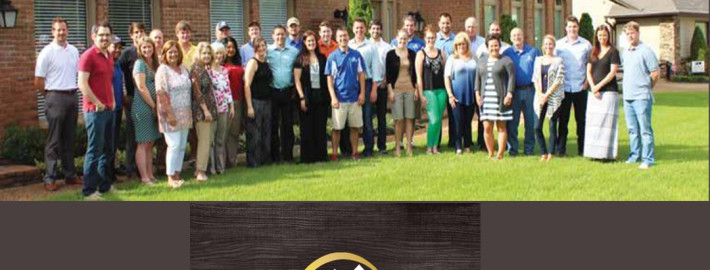What Cash Flow Really Means When Investing in Rental Homes
By Adiel Gorel
Understanding the value of cash flow in rental home investments cannot only optimize your investment, but also secure financial growth over time. This article seeks to demystify the multifaceted nature of cash flow in rental properties, particularly with the use of a 30-year fixed rate loan.
article continues after advertisement

For starters, it’s crucial to understand the basic premise of buying a rental home using a small down payment and a 30-year fixed-rate loan. This financing strategy entails constant principal and interest payments throughout the term of the loan. The total of principal and interest (PI) payment does not fluctuate regardless of inflation. That means inflation becomes a “friend” to the owner, as it constantly makes all prices rise EXCEPT the fixed mortgage PI payment, as well as the fixed mortgage’s balance. As a result, with the passage of time, and thanks to inflation, the REAL value of the fixed loan becomes ever-smaller since the price of everything rises constantly with inflation, while the mortgage payment and balance never do.
Historical data shows that rental rates usually trend upward with inflation, on average. While inflation may seem daunting for many economic sectors, it is a boon to the rental housing market. Property owners stand to gain increased revenue over time, as rents rise but the mortgage PI payment remains the same, which positively impacts their overall cash flow. As the home value also rises with inflation, the owner’s equity rises as well, building the owner’s net worth.

Often, investors and real estate novices interpret ‘cash flow’ as the initial cash flow that occurs at the time of purchase. This perspective, however, is limited, and does not give a comprehensive picture of the lifetime behavior of the property. While the initial cash flow is undoubtedly an essential factor to consider, it should not be the sole determinant of a rental property’s value.
The owner of the rental home enjoys constant cash flow improvement as rents escalate due to inflation. While rental income grows, the principal and interest (PI) mortgage payment remains static due to the fixed-rate loan. This discrepancy creates a widening gap between income and expense over time, increasing the rental home’s profitability. Hence, an investor’s cash flow does not stagnate at the initial point of property purchase but continues to rise in a beneficial cascade over time.
Given this evolving nature of cash flow, it’s more realistic to consider it over the years rather than focusing solely on the initial cash flow at the moment of purchase. Viewing cash flow as a long-term component can guide strategic decision-making, enhancing the likelihood of generating substantial financial gain over time.

At the risk of repeating myself (and this is so important for our future I think it bears repeating), the owner also benefits from an ever-decreasing real dollar value of the loan balance due to inflation. The principal of a 30-year fixed-rate loan does not increase with inflation. Over time, the principal balance decreases in real dollar value, making the debt easier to handle as years go by. This phenomenon becomes even more pronounced when an investor owns several rental homes. Once the loan balances reach a low point, say 25% of the home value, an investor can opt to sell several properties. After accounting for taxes (even if no tax deferred exchange is used), the proceeds can be used to pay off the remaining loans. With the remaining properties free and clear, they can provide a significant boost to the owner’s cash flow, creating a more secure financial footing. That is also an important facet of “cash flow”. Many people retire powerfully at that stage. Even though the loan is called “30 years fixed”, we don’t have to wait for 30 years, a scenario like the one described above typically happen in 12-14 years.

Rental homes, especially those financed via 30-year fixed-rate loans, are long-term investments typically spanning a decade or more. In the initial years, the rental income may merely cover the mortgage payments and operational costs, with little left as profit. If interest rates are high and the down payment is low, it is quite possible to begin the journey with some negative cash flow. However, as the years pass, the benefits of rising rents and the decreasing real value of the loan balance and PI payments, begin to manifest. Over time, these properties can result in a substantial income stream, possibly to the point of substituting regular employment income.
The primary “cash flow” most people rely on at the beginning of their real estate investing journey, is their job-based salary or income. But venturing into rental homes investment can create an additional, and in time, a primary cash flow source that can revolutionize your financial narrative. Thus, understanding and effectively managing cash flow in rental homes can set you on a path to long-term financial stability and growth, turning the dream of financial independence into a tangible reality.

If interest rates are high at the time of purchase, the investor needs to consider that, in the future, interest rates can only do one of three things: they can stay the same, they can go up, or they can go down.
If interest rates stay the same, all the benefits of the financial gift called “A 30-year fixed mortgage in the face of constant inflation”, accrue to the owner. The PI payments get lower and lower in real dollars, as the rents increase. The principal owed constantly gets eroded by inflation, and well as by the principal payments made monthly. In time (usually 12 to 14 years), the loan balance is a relatively small fraction of the home value, and the owner has good equity built up, which can be translated into significant cash flow.
If interest rates go up, the same benefits accrue to the owner as when the rates stay the same, with the additional psychological benefit of feeling good to be locked into a rate that is lower than the market rate.

If interest rates go down, the owner can refinance the loan to a new low rate. Yes, refinancing is not free. However, many lenders build the loan expenses into the balance of the new loan, making it easier as far as cash expenditures. It’s a simple calculation as to how many months of holding the property it will take to cover the expense of refinancing. For the long-term holders (and I recommend that everyone be a long-term holder), the refinance expense will be covered in a fraction of the future holding time of the property, and will usually justify itself many times over.
article continues after advertisement

When I talk to new investors, it is not uncommon for them to be engineers or managers in Silicon Valley. Such an investor is well paid. In many cases, they are married, and the spouse also works. I consider the initial overall cash flow in their life to be the cash flow from their salaries or business income. As the years go by, the property gives off higher and higher cash flow, as rents rise with inflation, while the mortgage PI payments remain fixed. After 12-14 years, in most cases, the investor may find themselves with several homes (some investors end up buying dozens or more, using 1031 tax deferred exchanges, as well as other methods, on route to building a large portfolio), with loan balances as little as 25% of the value of the home. They can then sell, say, a quarter of the homes, pay taxes, and pay off the remaining small loans with the proceeds. Now, with several (or many) free-and-clear properties, the houses provide so much cash flow, that in many cases the owner can retire well.

ADIEL GOREL
Adiel Gorel has more than three decades of successful real estate investing experience. As the CEO of ICG (International Capital Group) Real Estate, a world-renowned real estate investment firm founded in the San Francisco Bay Area in 1987, Gorel has helped investors utilize one of the most powerful investment tools—single family rental homes. He teaches people how to have fun with a process most find complex and speaks about the importance of securing a strong financial future for retirement, business investing, and college education.
Through ICG, he has assisted thousands of investors, from novice to expert, in purchasing over 10,000 properties to date. He is also the author of Remote Control Retirement Riches, and Invest Then Rest: How to Buy Single-Family Rental Properties, which includes numerous investor reports describing their real-life investing experiences. He has also authored Remote Controlled Real Estate Riches, Discovering Real Estate in the U.S. and Life 201.
Gorel has been featured on NBC, ABC, in Fortune Magazine, the San Francisco Examiner, and numerous radio shows showcasing his no-nonsense, insightful approach to rental single family home investing. He speaks worldwide and throughout the U.S., sharing his knowledge on a variety of topics including securing a powerful financial future, investing in single-family homes, the 30-year fixed-rate mortgage, and related subjects.
ICG has established an infrastructure to support investors in many metropolitan areas in the U.S. Gorel owns many properties himself.
To this day, Gorel supports individual investors via planning, assistance in remote home buying, and property management issues resolution.
He holds a master’s degree from Stanford University. His professional experience includes being a Hewlett-Packard research engineer, as well as management and director positions at Excel Telecommunications, and several biotechnology firms. He lives in the San Francisco Bay Area.


















 While others are increasingly concerned about sharing their secrets and playbooks, Chris has become very active on the online real estate forum BiggerPockets. Asked about this participation in the new sharing economy he says: “When I was 18 years old I was lucky enough to attend a Zig Ziglar event. He said something on stage that really had a profound effect on many of us attending that night. He stated that you could have anything you wanted in life, if you help enough other people get what they want in life.” That’s a philosophy the Clothiers continue to practice on a daily basis.
While others are increasingly concerned about sharing their secrets and playbooks, Chris has become very active on the online real estate forum BiggerPockets. Asked about this participation in the new sharing economy he says: “When I was 18 years old I was lucky enough to attend a Zig Ziglar event. He said something on stage that really had a profound effect on many of us attending that night. He stated that you could have anything you wanted in life, if you help enough other people get what they want in life.” That’s a philosophy the Clothiers continue to practice on a daily basis. THE SCOREBOARD
THE SCOREBOARD Whether just starting out in real estate, or seeking to expand an already formidable real estate empire there is no question that it’s worth checking out what’s going on in Memphis. Investors can scoop their Free Passive Income Jumpstart Package, and detailed analysis of three solid rental property markets, Houston, Memphis, and Dallas, at
Whether just starting out in real estate, or seeking to expand an already formidable real estate empire there is no question that it’s worth checking out what’s going on in Memphis. Investors can scoop their Free Passive Income Jumpstart Package, and detailed analysis of three solid rental property markets, Houston, Memphis, and Dallas, at 
 An excerpt from “The Insider’s Guide to Attracting Private Money: Five Secrets to Fast, Unlimited Capital So You Can Save Money, Buy More Real Estate, & Build Wealth,” by Mark Hanf, President of Pacific Private Money.
An excerpt from “The Insider’s Guide to Attracting Private Money: Five Secrets to Fast, Unlimited Capital So You Can Save Money, Buy More Real Estate, & Build Wealth,” by Mark Hanf, President of Pacific Private Money. That is why disclosing risk is such an important factor when you create your investment opportunity presentation. Addressing and disclosing risks in your presentation will make you look professional and thorough, just as the other important components that we have discussed so far in this book have done.
That is why disclosing risk is such an important factor when you create your investment opportunity presentation. Addressing and disclosing risks in your presentation will make you look professional and thorough, just as the other important components that we have discussed so far in this book have done. If you are new to real estate investing or if you have formed a new company to pursue real estate investments, you may not have a track record of success. In that case, your business model is unproven.
If you are new to real estate investing or if you have formed a new company to pursue real estate investments, you may not have a track record of success. In that case, your business model is unproven.
 The CEO of Southern California-based HomeUnion hopes to turn the business into the Amazon.com of real estate investing.
The CEO of Southern California-based HomeUnion hopes to turn the business into the Amazon.com of real estate investing. “We are making single-family real estate investment an institutional play where investors can buy this as they would any other stock market instrument. Our platform brings fully vetted investments. This is different from companies that sell opportunistic deals of the month and merely connect people with sellers and collect their money. ” Ganguly said.
“We are making single-family real estate investment an institutional play where investors can buy this as they would any other stock market instrument. Our platform brings fully vetted investments. This is different from companies that sell opportunistic deals of the month and merely connect people with sellers and collect their money. ” Ganguly said.